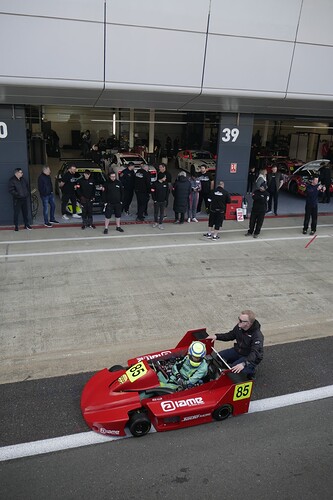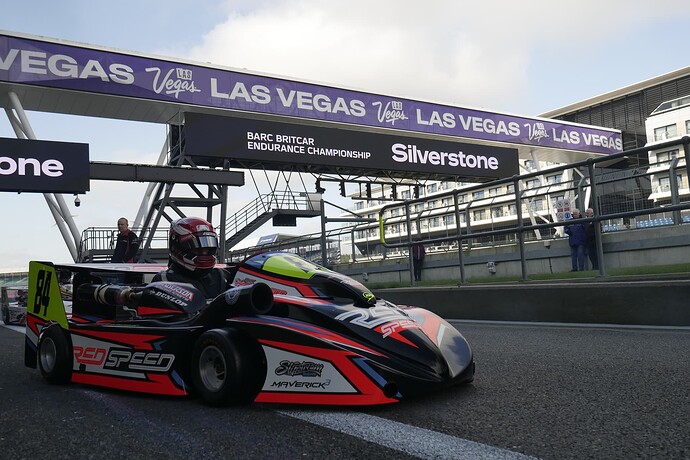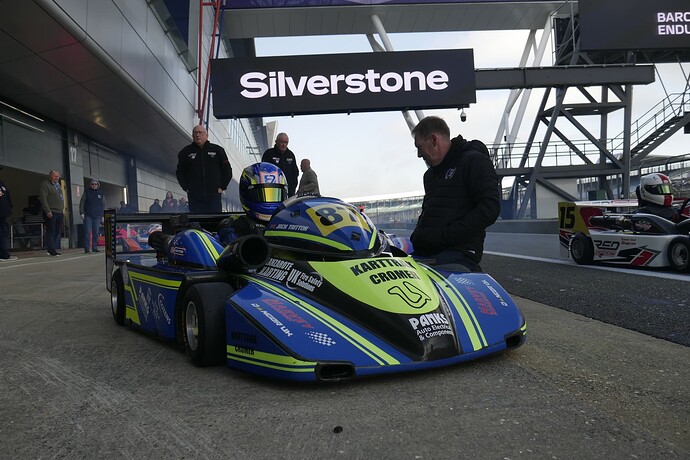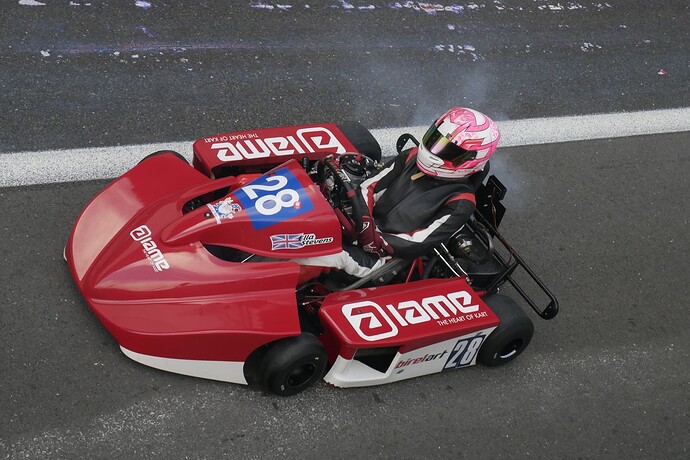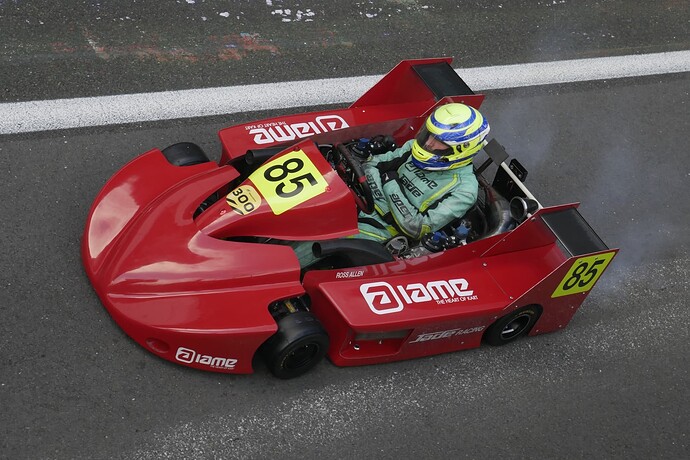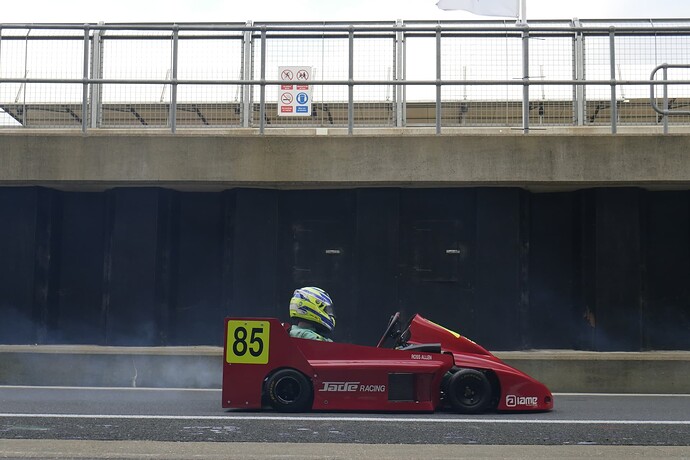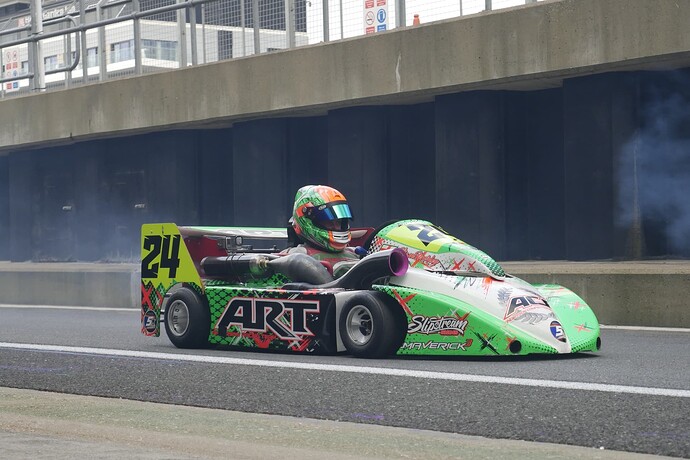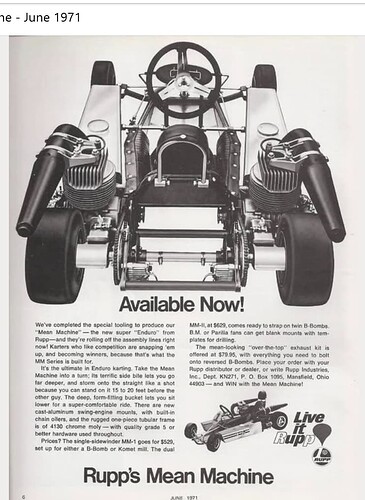Yesterday, I watched this and your other features about British Superkarts at Silverstone. I also saw the B.A.R.C. live-stream of the three superkart races on Saturday. It was all great content, and your vids were an ideal pairing with the race live-stream that gave a nice inside view of the superkart pits and paddock.
Some observations:
-
The full course yellow in Race 1 was odd, the stranded karts were on the edge of the track but the marshals seemed to have a really difficult time in trying to move them out of the way to get the race back to green, which didn’t happen. On that note, the live stream almost overlooked the incredible run in the first race by Liam Morley, from the back of the field, to just nipping by in first place right before the FCY came out.
-
I was confused at first when I saw ‘Jade-IAME’ as a Div. 1 - class kart and thought to myself, “IAME doesn’t have a twin-cylinder superkart engine…”, then I saw it was actually a pair of IAME KZ engines on either side of the kart.
-
It’s a rare sight in motorsport these days to see high-strung engines run to the absolute limit and blowing up left and right, but the twin-cylinder class karts are old-school and looked to have quite a bit of attrition, especially in the last race.
-
Curious to see the one 125 KZ-class kart, which runs strictly under KZ-regulations (motor regulations), faster than the 125 Opens, which allow digital ignitions and freer engine modifications.
-
Also, that KZ-class kart was running full long-track bodywork, instead of the typical CIK Homologated Sprint body. Years ago, here in the U.S., 125 shifters on the long-tracks had the option of running either CIK bodywork, or a long-track body at a higher weight, just like the UK now. The WKA here still allows that option, but other sanctioning groups like AKRA dropped the long-track body for its main 125 Shifter class and went to CIK bodywork only. (Although you are still allowed to run a 125 with long-track body in the Unlimited class.)
-
It was nice to see John West being interviewed. John has been in the Superkarts and Long-Track/Enduro/Road Racing scene in the United States for a very long time, and recently he’s been heading to Europe to race Superkarts at venues such as Silverstone, Donnington, and Assen.
-
It was also nice to see footage of one racer pitting out of their van, and you guys actually complementing it. Pitting out of a minivan is something I’m all too familiar with recently, but in my case, it’s a CIK 125 shifter. I can’t imagine what it’s like trying to stuff a full-bodied Superkart in a van, but hats-off to him for doing it, and kudos to you for showing it, because it’s scenes like this that will do more to convince viewers that participating in karting like this is actually possible. “Ignore the huge trailers, giant tents, pro-teams… look here, you can DO this”.
-
On that note, one thing I noticed both in your videos and the livestream is how many of the mechanics and drivers in that Superkart event look like, to borrow a phrase from where you’re from, regular “blokes”. As opposed to myriad of kids and teenagers that seem to overwhelm the paddocks on the sprint-side of karting. It’s a parallel I’ve noticed here in the U.S. as well, the difference in some cases in demographics between Long-track/Road Racing, and Sprint karting. We know some of the reasons why.
-
To end on a downer, Long-Track/Road Racing in the United States is struggling with the same issues Superkart racing in the UK are dealing with. Not just the greatly increased costs of competing. Over here, Woodbridge Kart Club has a very nice website, and other clubs do a very good job at running their event. But those other clubs have web pages that “minimalist” to say the least. And any additional media and social media presence is almost zero. Since there are no auto or major manufacturing companies aligned with kart racing, they have no financial support needed to boost their presence to the public. Very often, the content with the most reach are in-kart clips on Youtube that manage to go viral. And so this spectacular sport exists pretty much invisible to the rest of the world.
-
In some cases, being invisible like this is actually a good thing, but is just as often a big negative. And it greatly hinders the growth needed to keep existing in the future.
I can say more, but I’ve gone long enough. Thanks, and looking forward to more content in the future.

